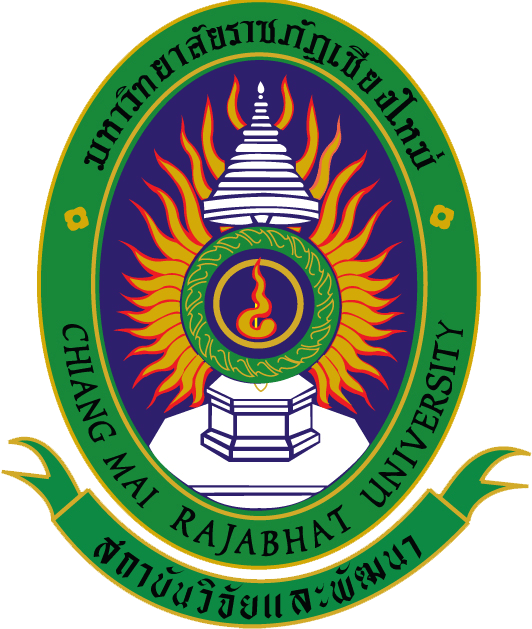
ระบบสารสนเทศงานวิจัย สถาบันวิจัยและพัฒนา มหาวิทยาลัยราชภัฏเชียงใหม่
Research Information System(RIS)
การแปรสภาพเชิงความร้อนเศษซากใบยางนาเป็นถ่านชีวภาพ
ผู้ช่วยศาสตราจารย์ภานุพงษ์ หมั่นขีด
คณะวิทยาศาสตร์และเทคโนโลยี
คำสำคัญ :
เลขทะเบียน :
1772-66-SCI-CMRU
บทคัดย่อ
การแปรงสภาพใบยางนาเป็นถ่านชีวภาพเป็นวิธีการหนึ่งที่มีประสิทธิผลในการลดปัญหาชีวมวล ซึ่งเศษซากของต้นยางนาได้สร้างปัญหาให้กับชุมชนเขตพื้นที่ อ.สารภี จ.เชียงใหม่ - จ.ลาพูน อีกทั้งเป็นการเพิ่มมูลค่าของชีวมวลทางการเกษตร สร้างความตระหนักให้แก่สมาชิกในชุมชนให้เห็นคุณค่าของต้นยางนาที่มีความเก่าแก่ทางประวัติศาสตร์ การแปรสภาพใช้กระบวนการไพโรไลซิส โดยการให้ความร้อนแก่ชีวมวลในอัตราการ 10 C/min ภายใต้สภาวะจากัดออกซิเจน ณ อุณหภูมิ 500 C เป็นระยะเวลา 1 ชั่วโมง ด้วยเตาปฏิกรณ์แบบคงที่ (Fixed bed) ผลการศึกษาพบว่า ใบยางนามีองค์ประกอบของลิกนินปริมาณมากถึง 71.38 % ทาให้มีโครงสร้างที่แข็งแรง ยากต่อการย่อยสลายตามธรรมชาติ โดยใบยางนาแห้ง ถ่านชีวภาพ มีค่าความร้อน (HHV) และปริมาณคาร์บอนคงตัว เท่ากับ 4,183 cal/g (4,917 cal/g) และ 21.90% (51.21%) ตามลาดับ ถ่านชาร์มีคาร์บอนคงตัวมากเป็น 2.3 เท่าของวัตถุดิบจัดอยู่ในระดับชั้น 2 (Class 2) (30% Corg 60%) ตามมาตรฐานขององค์กรความคิดริเริ่มถ่านชีวภาพนานาชาติ (IBI) นอกจากนี้สัตส่วน H/C และ O/C ของถ่านชาร์ใบยางนา มีค่าเท่ากับ 0.385 และ 0.098 ตามลาดับ สูงกว่าถ่านชีวภาพทั่วไป อีกทั้งยังมีความเสถียรของอายุยาวนานมากกว่า 1,000 ปี ถ่านชาร์มีพื้นที่ผิว ปริมาตรของรูพรุนทั้งหมดและ ขนาดรูพรุน เท่ากับ 302.67 (m2/g) 0.16 (cm3/g) และ 2.16 nm ตามลาดับ รุพรุนส่วนใหญ่เป็นชนิด Mesopore และ Micropores (ปริมาณน้อย) จึงทาให้ถ่านชีวภาพใบยางนามีสมบัติทางกายภาพเหมาะสมสาหรับใช้เป็นวัตถุฟื้นฟูปรับสภาพดิน ดูดซับแก๊สและ บาบัดน้าเสีย ในอนาคตควรมีการศึกษาต่อไปเพื่อการใช้ประโยชน์ และพัฒนาเป็นผลิตภัณฑ์สาหรับวิสาหกิจชุมชนต่อไป
Abstract
Converting Yang Na (Dipterocarpus alatus) leaves into biochar is an effective method for addressing biomass waste issues, as the trees lining Chiang Mai-Lamphun Road in the Saraphi district contribute to biomass problems in community areas. Moreover, this process transforms agro-waste (non-value-added) into value-added products. The community will also become aware of the ancient history of Yang Na trees. The thermal decomposition behavior of the leaves during the pyrolysis process was performed in an oxygen-free atmosphere using a fixed bed reactor, with a heating rate of 10 °C/min, a pyrolysis temperature of 500 °C, and a holding time of one hour. The results indicate that the dried law material has the highest lignin composition at 71.38%, which contributes to a more complex network structure, making it stronger and more resistant to natural decomposition. The dried leaves and biochar exhibit higher heating values (HHV) of 4,183 cal/g and 4,917 cal/g, respectively, along with fixed carbon contents of 21.90% and 51.21%. This reveals that the fixed carbon content in the biochar is 2.3 times higher than that of the law biomass. According to the International Biochar Initiative (IBI) classifications, the Yang Na biochar would be determined as class 2 (30% ≤ Corg ≥ 60%). Moreover, the H/C and O/C molar ratios of the biochar were calculated to determine carbon stability, showing values of 0.385 and 0.098, which are higher than those of general biochar. It should be noted that the Yang Na leaves biochar would have a half-life of more than 1,000 years. The Brunauer-Emmett-Teller (BET) analysis of the leaves charcoal found that the surface area, total pore volume, and pore size distribution were approximately 302.67 m²/g, 0.16 cm³/g, and 2.16 nm, respectively. It is evident that the Yang Na leaves biochar is characterized by a high mesopore and low micropore surface area. Therefore, the biochar has superior physical properties and is more beneficial for soil remediation, gas pollutant capture, and wastewater treatment. Future research should focus on the utilization of Yang Na leaf biochar and its products for community enterprises.
ไฟล์งานวิจัย
5 01 พ.ค. 2566
กองทุนวิจัย มหาวิทยาลัยราชภัฏเชียงใหม่
202 ถ.ช้างเผือก ต.ช้างเผือก อ.เมือง จ.เชียงใหม่ 503000
053-88-5555